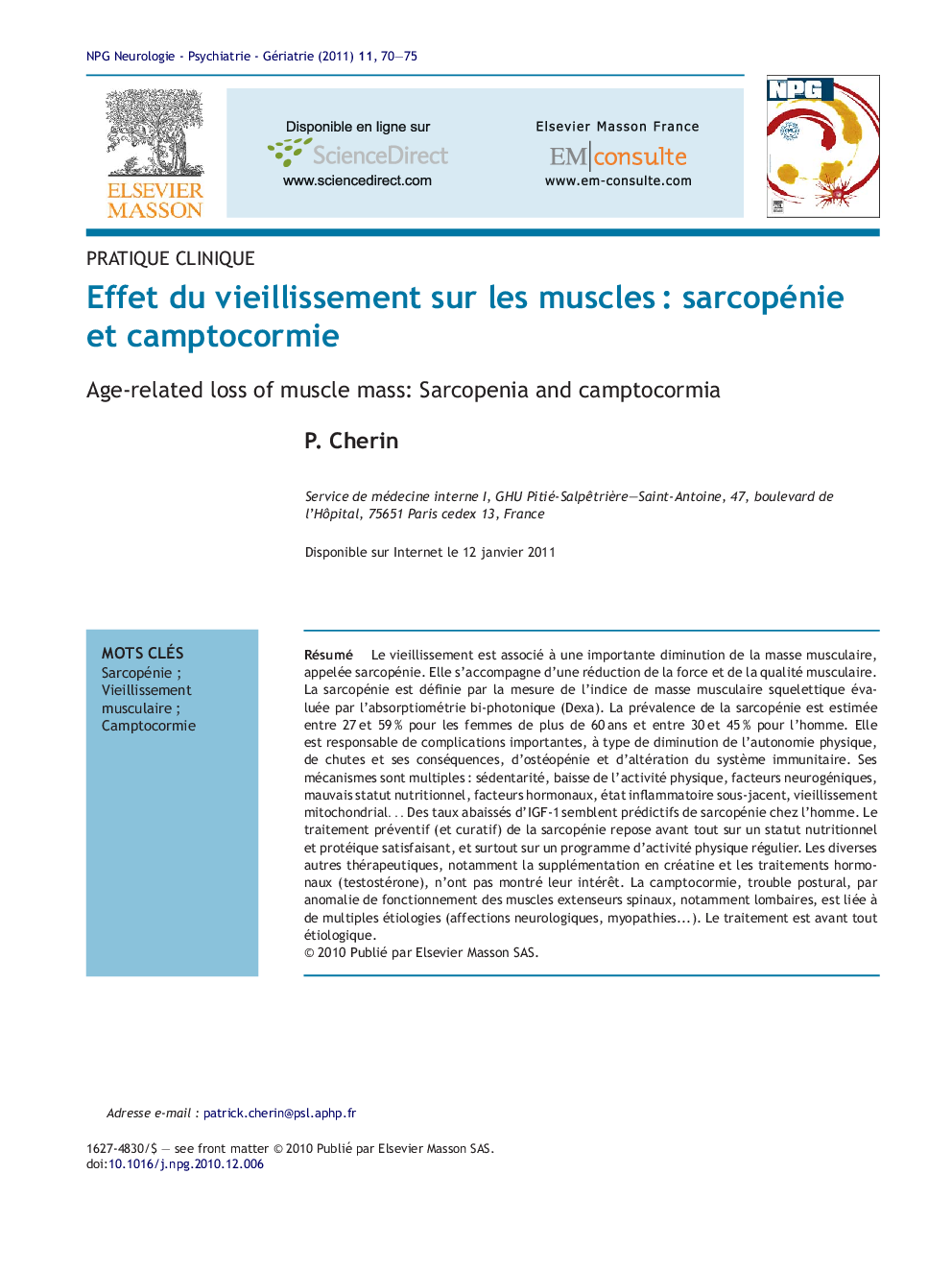| Article ID | Journal | Published Year | Pages | File Type |
|---|---|---|---|---|
| 3326321 | NPG Neurologie - Psychiatrie - Gériatrie | 2011 | 6 Pages |
Abstract
Sarcopenia or age-related loss of muscle mass is observed in older adult subjects. Based on accepted definition of sarcopenia (skeletal muscle mass lesser than 2 standard deviations below the mean for young healthy adults measured by dual-photon absorptiometry), prevalence of sarcopenia is estimated to 27 to 59 % of women and 30 to 45 % of men. Sarcopenia is responsible of falls and associated with functional impairment and subsequent physical disability. Sarcopenia is hypothesized to result from various mechanisms, including physical activity, nutritionnal status, mitochondrial dysfunction, immunologic and hormonal changes occurring with age. For example, low levels of insulin-like growth factor-1 in men predict loss of fat-free mass. Endurance and resistance exercise remain the best prevention treatment of sarcopenia. Nutritional or creatine supplementation and hormone therapy including oral testosterone do not show significant interest in sarcopenia. Camptocormia, a postural disorder by malfunction of spinal extensor muscles, is related to multiples aetiologies (neurological, myopathiesâ¦). Treatment is primarily causative.
Related Topics
Health Sciences
Medicine and Dentistry
Geriatrics and Gerontology
Authors
P. Cherin,
